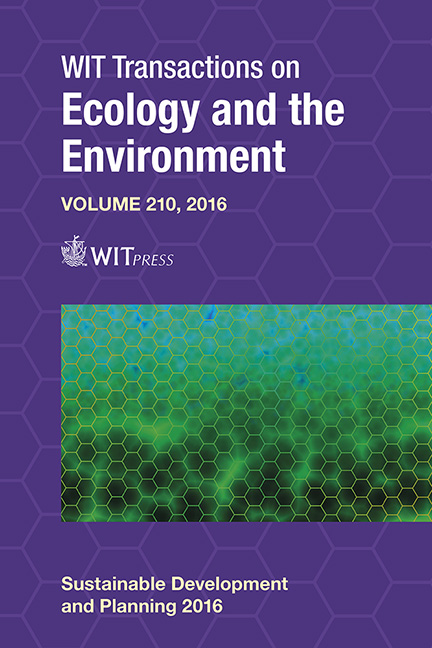Effects Of Location On The Physico-chemical Properties Of Water In The Matatiele Local Municipality, South Africa
Price
Free (open access)
Transaction
Volume
210
Pages
11
Page Range
713 - 723
Published
2017
Size
1,257 kb
Paper DOI
10.2495/SDP160601
Copyright
WIT Press
Author(s)
L. T. Polasi, M. D. V. Nakin, Z. Magayiyana, C. M. Musampa
Abstract
Water security is one of the crucial global issues because of climate change. South Africa is a water scarce country and it is currently facing challenges in water provision, sanitation and supply. The aim of the study was to investigate how location affects the physico-chemical properties of water in the Matatiele Local Municipality. This was achieved by identifying water sources in three categories of location (rural, peri-urban and urban) which are mostly used and measuring their physico-chemical properties of water. They were measured using HACH 2100Q (V1.03/9) for turbidity and HQ40d (MULTI V2.3.0.730) for pH, dissolved oxygen and conductivity in each of the water sources at each category. Within each category, six areas were randomly selected. ArcGIS (version10.3) was used to map the water sources. Chi-squared tests revealed that turbidity was significantly highest in rural areas, and lowest in urban areas. In wells, dams and rivers, turbidity was found to be out of WHO drinking water guidelines. Similarly, pH values were out of the WHO drinking water guidelines in wells for rural areas, tanks for urban areas and in springs and wells in the peri-urban areas. Dissolved oxygen and conductivity varied among the three categories with no clear patterns. These results highlight a need for the Department of Water and Sanitation authorities to give much attention to the water quality in rural and peri-urban areas.
Keywords
water sources, water quality, pH, turbidity, dissolved oxygen, electrical conductivity





